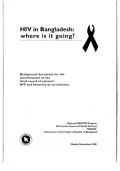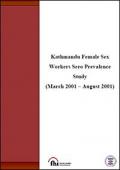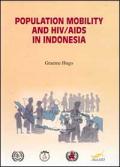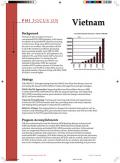What's New
Displaying results 4831 - 4840 of 4911

Resource | Fact Sheets,
India is a country of more than one billion people, seventeen official languages, and hundreds of ethnic groups. The first case of HIV was reported in 1986 in Chennai. The National government launched the National AIDS Control Program in 1987.

Resource | Tools,
The aim of the manual is to introduce teachers and others who work with young people to a way of teaching drug education and other health issues such as HIV/AIDS, based on the development of links between knowledge values and skills.

Resource | Publications,
Information from the third round of HIV surveillance in Bangladesh show that infection rates remain low, but it is now clear that this situation will not continue unless there is a radical reduction in risk behaviour. Sex workers in Bangladesh report among the highest number of partners per week in Asia and condom use are lower here than in any other Asian country in which it has been measured.

Resource | Publications,
This study was carried out among female sex workers in Kathmandu valley from March to August 2001 to determine the prevalence of HIV and syphilis and also to examine behavioral attitudes related to sexually transmitted disease.
Total of 500 female sex workers (300 street based and 200 non-street based) were included in the study. All the female sex workers who agreed to participate were included in the study. After obtaining an informed consent a questionnaire was administered and blood sample was collected.

Resource | Publications,
This report illustrates the powerful and negative effects of stigma on those affected by HIV/AIDS. The stories from children are particularly powerful. They remind us all of the human tragedies that lie behind the statistics. HIV/AIDS touches us all in some way – through family, friends, or communities. Addressing the HIV/AIDS pandemic requires a strong and coordinated response from all sectors of society - government, NGOs, churches, communities and children, as well as the international community. But this response has to incorporate changes in attitude and behaviour at the personal level, if they are to be successful.

Resource | Publications,
The aim of this study is to use existing information to provide a comprehensive picture of the levels, patterns, composition and trends of the various types of contemporary population mobility occurring within Indonesia, as well as from and to the country. Insofar as it is possible using existing data, the study aims to indicate how population mobility in Indonesia is linked to the existing and likely future diffusion of HIV/AIDS.
It finds that, while undoubtly such a relationship exists, there is a dearth of existing research and knowledge not only into the nature of the relationship but also the location of the places where mobility is influencing and likely to influence the spread of HIV/AIDS.

Resource | Fact Sheets,
Indonesia, a geographically diverse country, has a relatively low HIV prevalence. However, cumulating epidemiologic evidence shows epidemics are emerging among some high-risk groups, particularly including sex workers in its eastern Irian Jaya Province and intravenous drug users (IDUs) in Jakarta. Three years of political upheaval and economic crisis have challenged development and health programs and threatened the integrity of this culturally and geographically diverse country

Resource | Fact Sheets,
Just over 1,500 new cases of HIV/AIDS, most involving sexual transmission, have been reported since January 1984. Surveillance data indicates that prevalence rates are low even among the most vulnerable groups. Awareness of ways to prevent HIV transmission remains high, but has not been translated to behavior change. Less than half of the at-risk population groups report consistent condom usage. Injecting drug use among some deep sea fishermen and freelance sex workers in General Santos City was unexpectedly high.

Resource | Fact Sheets,
Vietnam is still considered to have a concentrated HIV/AIDS epidemic, with almost two-thirds of reported HIV infections occurring to intravenous drug users (IDUs) and most of the rest in sex workers. The prevalence of HIV in all of the sentinel surveillance groups has been increasing steadily since 1996 (in 2000: IDUs 20%, sex workers 4.5%, STD patients 1.2%, military 0.5%, and ANC clients 0.25%), however still remaining below 1% among low risk population. Since the first case of HIV was reported in December 1990, the reported number of HIV-positive persons in Vietnam has increased to over 37,000 as of July 2001, however, the actual number of persons living with HIV/AIDS (PLHAs) is much higher.

Resource | Fact Sheets,
HIV was first detected in Cambodia during serological screening of donated blood in 1991. The first cases of AIDS were diagnosed in late 1993 and early 1994. Between 1995-1998, surveillance data from the National AIDS Program (NAP), showed a significant spread of HIV in several key populations.





